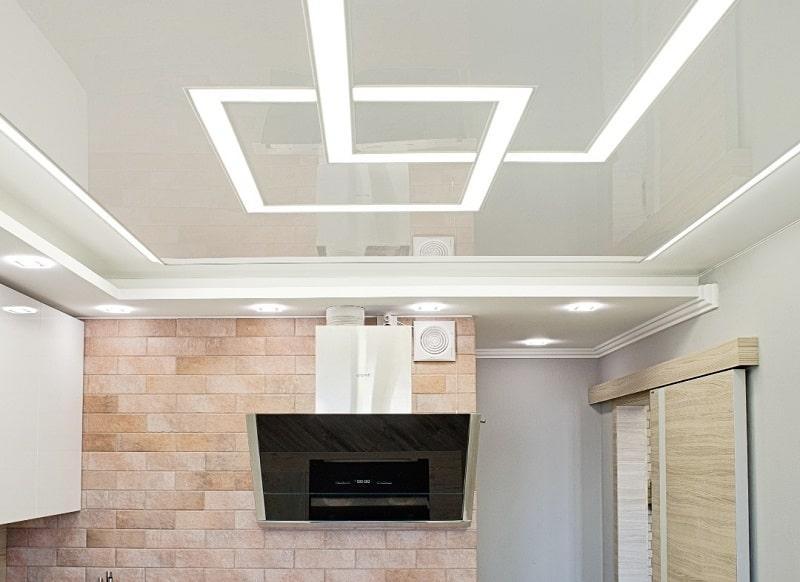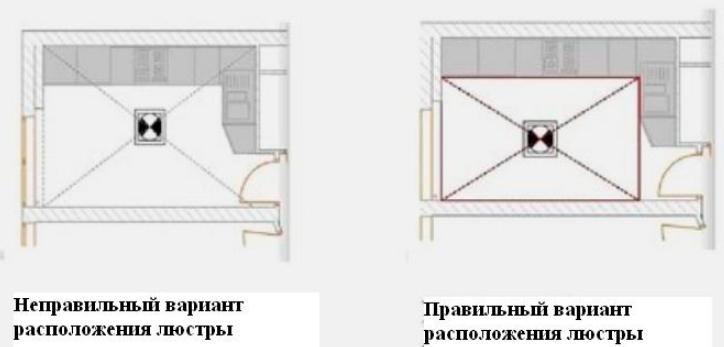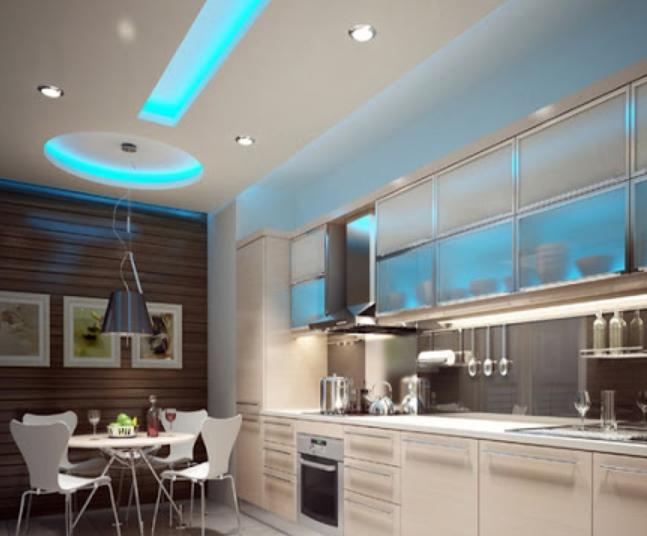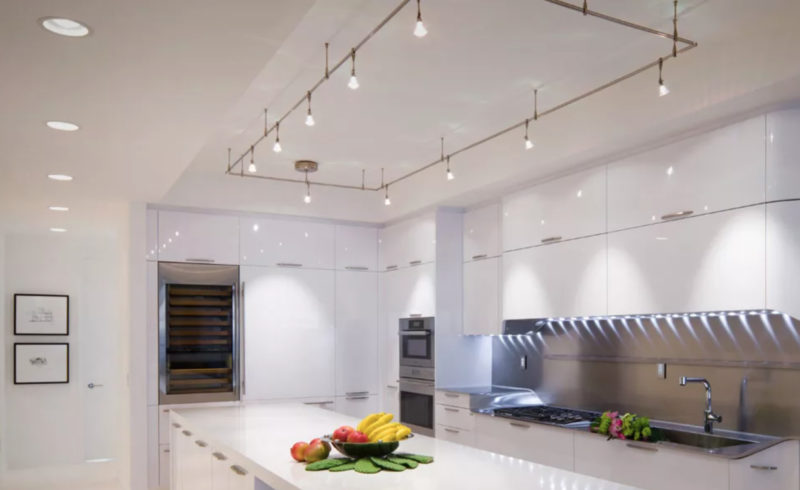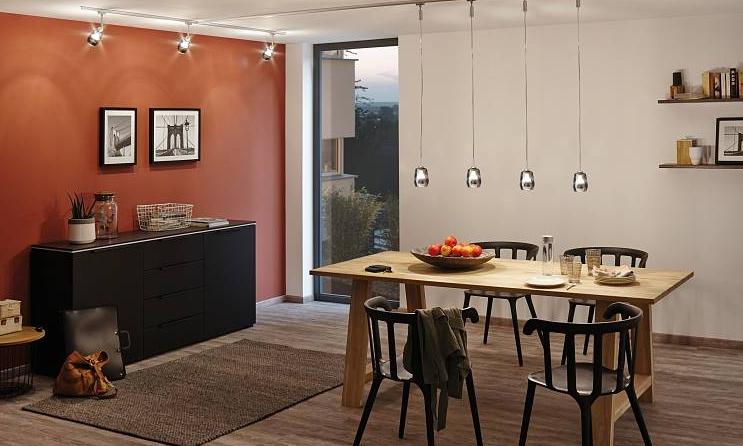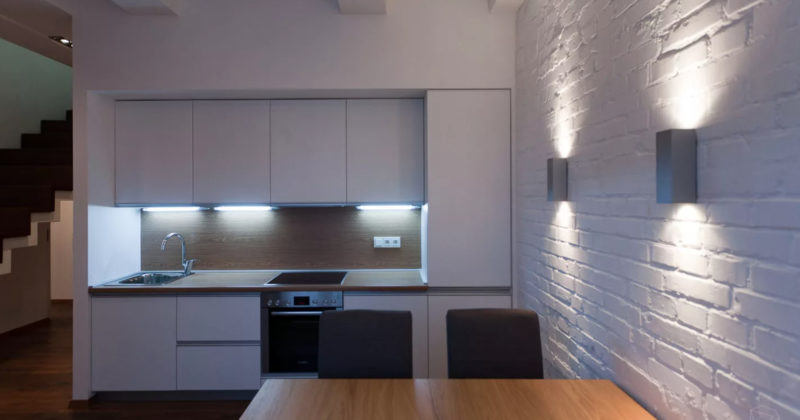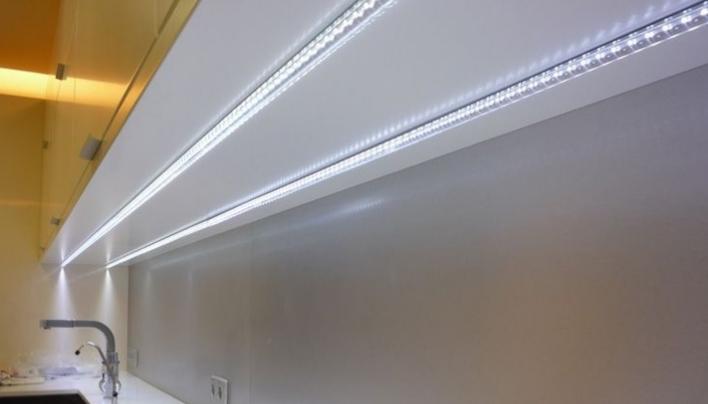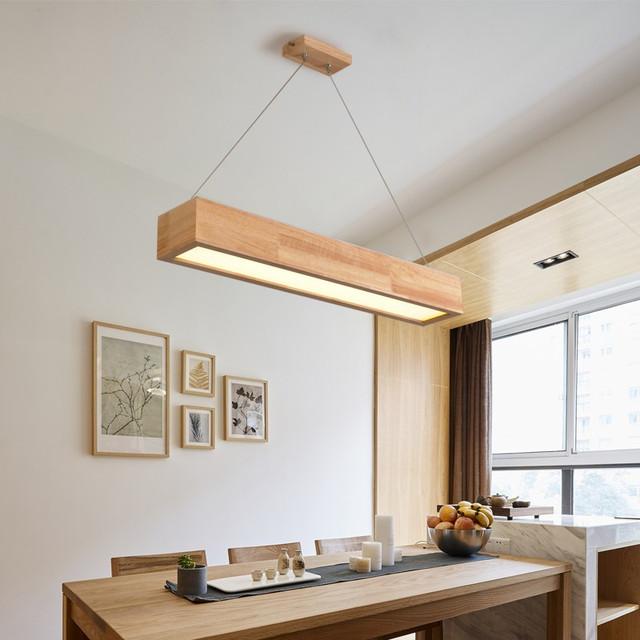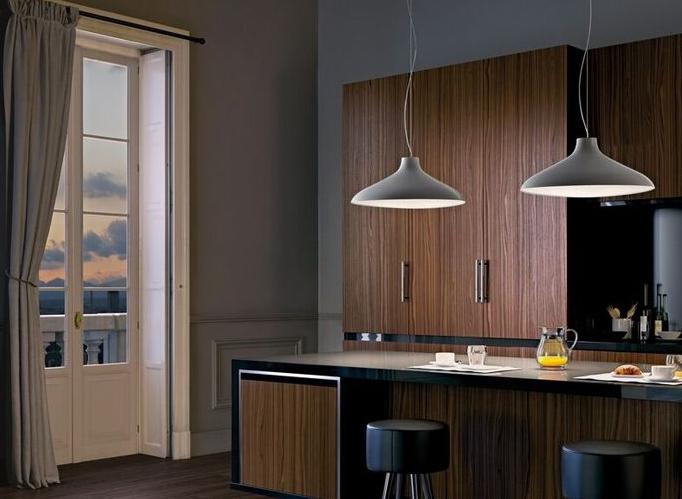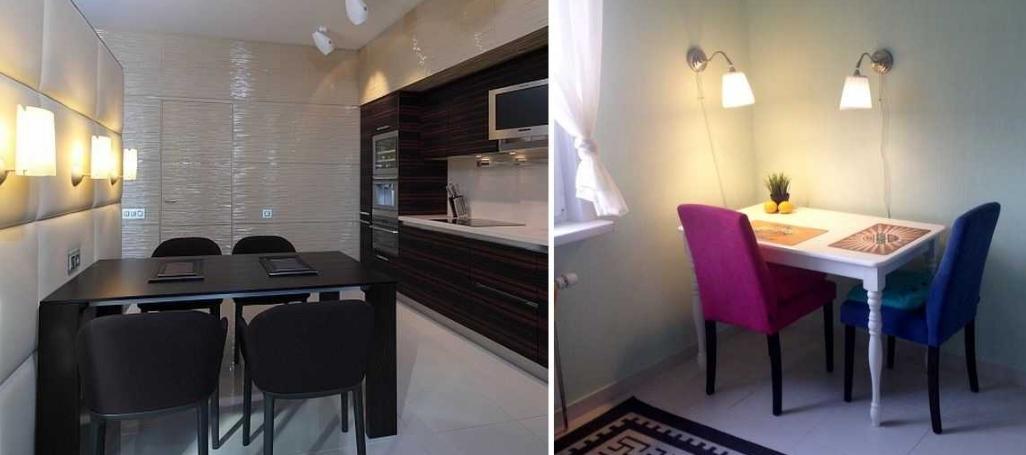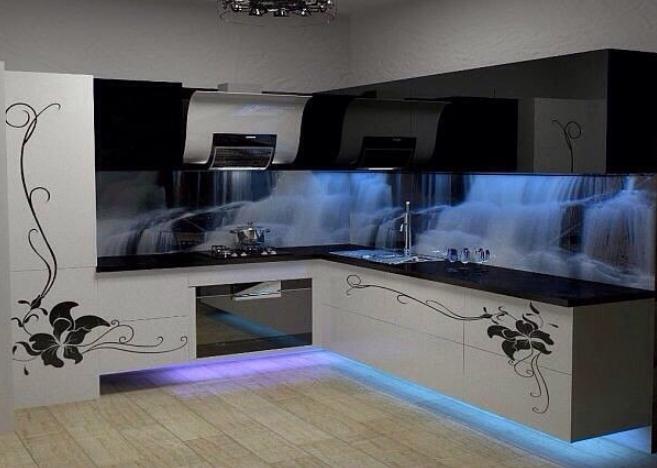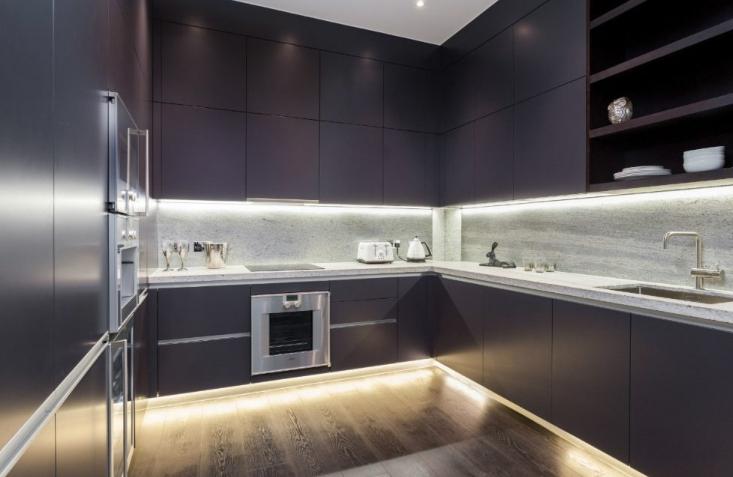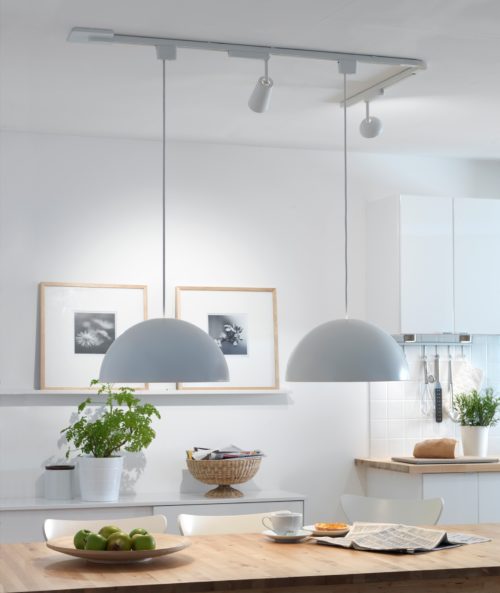How to make kitchen lighting - the arrangement of fixtures
The lighting in the kitchen must be arranged correctly to ensure the functionality and attractive appearance of the room. It is important to follow all the recommendations and choose the best types of equipment. In addition, the functional areas are thought out in advance, because they need to be additionally illuminated.
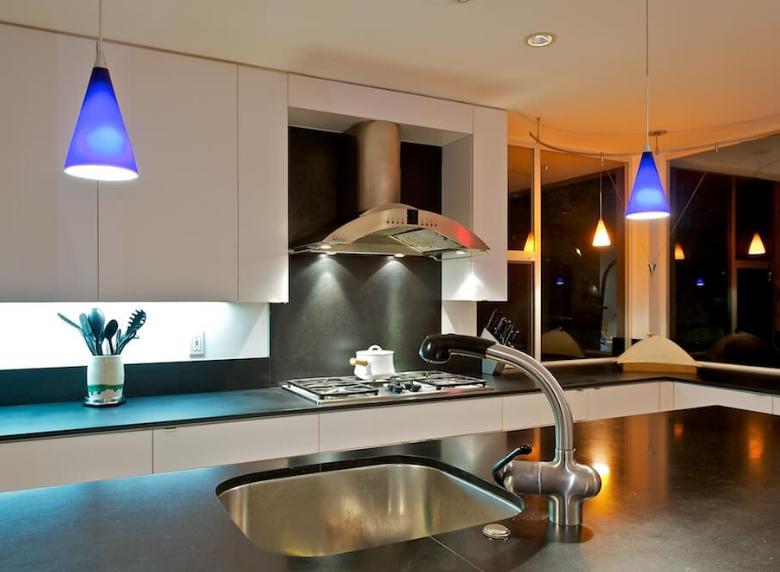
Standards and requirements
There are a number of sanitary and hygienic requirements, which specify all the necessary information on the organization of lighting. The main regulatory act is SNiP 23-05-2010 "Natural and artificial lighting", as well as the code 52.13330.2011 with the same name. According to the documentation of illumination in the kitchen should be 150 to 200 lux per square meter.
To calculate the total power is easy, you need to multiply the kitchen area in square meters by 200. The result will be a reference point. Many light bulbs are not specified in lux, there is only a reference in watts. This data was collected in the table for the sake of simplicity.
| Luminous flux in lumens | Incandescent lamp, W | Fluorescent, W | LED, W |
| 250 | 20 | 5-7 | 2-3 |
| 400 | 40 | 10-13 | 4-5 |
| 700 | 60 | 15-16 | 8-10 |
| 900 | 75 | 18-20 | 10-12 |
| 1200 | 100 | 25-30 | 12-15 |
| 1800 | 150 | 40-50 | 18-20 |
| 2500 | 200 | 60-80 | 25-30 |
These are average values, they may vary with a particular lamp. Especially often there is a difference in LED equipment, as there lighting characteristics depend on the type of diodes used, the number and location.
Based on the data, you can calculate the right number of bulbs for the kitchen. If possible, it is worth using more light sources. 3 lamps at 30 watts will provide better illumination than one element at 100 watts. There are also requirements for the uniformity of light, so it is worth selecting equipment so that the room was not darkened places.
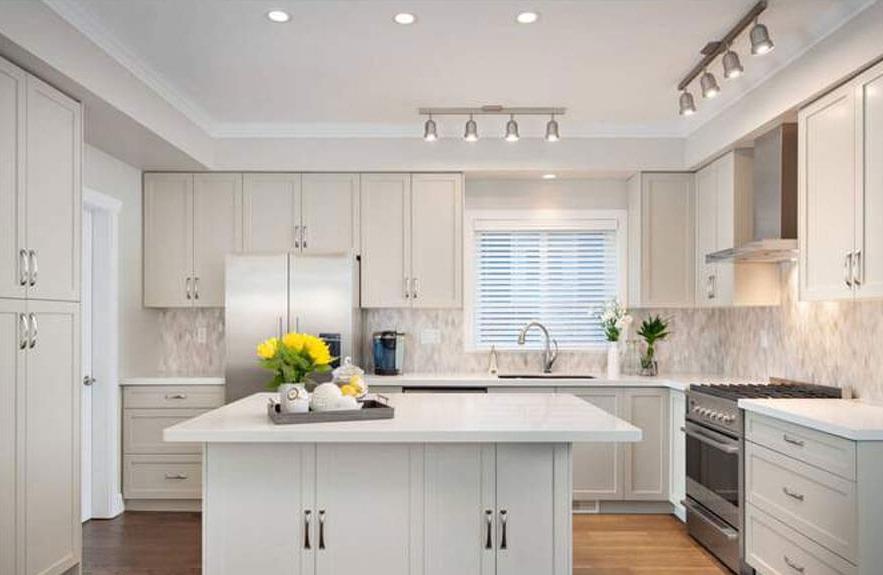
It is also worth taking into account the pulsation of light. This figure should not exceed 10%, otherwise when spending a long time in the room will fatigue the eyes. The data should be on the packaging with the lamp. The fluorescent types should be checked most thoroughly because they have the highest rate of invisible flicker.
Color temperature affects the perception of the room and the emotional state of people. For the kitchen, the best solution would be a warm yellowish shade, which adjusts to rest and soothe. You can use natural lightas it is neutral and creates a comfortable environment. As for the colder shades, they are is only suitable for the working area.
Color rendering index (Ra) indicates how naturally colors are reproduced in artificial light. It is measured on a scale from 0 to 100. For the kitchen, you should choose options with a value of 80 or higher, so that the colors are not distorted.
Features of general light in the kitchen
General light in the kitchen is the main light, most often it works regardless of whether a person is cooking or sitting at the dining table. Therefore, high demands are made on it, it is worth choosing reliable equipment that evenly distributes light over the entire area. There are several aspects to keep in mind here:
- It is better to install a chandelier with three bulbs than with one. The light must spread in all directions for the best effect. The second option is to choose a model with a diffusing plafond or a modern LED panel of suitable power. Options with dense plafonds are not very good, as the light spreads over a limited area. How to choose a chandelier in the kitchen is described in detail here.
- When using spotlights as the main lighting, you need to calculate their number and place them evenly over the entire illuminated area. Such solutions are best suited for tension and plasterboard structures, as it is necessary that there was a void between the ceiling and the partition.Light lines look great with spot lighting.
- The chandelier should be placed in the center of the space. Moreover, the space is not the entire area of the kitchen, and the free space without taking into account the kitchen set. That is, the center should be shifted so that the light is evenly distributed where it is necessary.It is necessary to choose the actual, not geometric center of the space.
- The size of the kitchen is taken into account. If it is small, one chandelier will be enough. The main thing is that it should evenly distribute light in all directions. You can use both diffused and reflected light, when the flow is reflected from the ceiling. But in this case you need to choose lamps of higher power, because the brightness will be lower.
- For a large kitchen, one chandelier is usually not enough. If the room is elongated shape, you can hang 2-3 similar chandeliers at equal distances, it is fashionable and functional. You can also use track systems, when several lights are mounted on a rail, which can be directed in any direction.
- It is also worth looking at the possibility of adjusting the light. To do this, they install dimmerswhich can change the brightness to achieve the optimum effect depending on the time of day.
In the kitchen, it is imperative to have normal natural light. Therefore, it is not necessary to hang thick curtains on the windows and limit the penetration of daylight into the room.
This video discusses the most popular types of lighting.
Organizing local and spot lighting
General lighting alone is not enough to provide normal conditions in a modern kitchen. You need to organize the light so that in each functional area it meets all the requirements and provides comfort. This is where these kinds of lights come in:
- Spot lights - They are the most commonly used lights in the kitchen. Usually they put recessed models, they will fit under suspended ceilings and plasterboard structures. If there is no void above the ceiling, overhead solutions are installed. Designs can be both stationary and adjustable, which is very convenient.An unusual solution for the kitchen.
- Modules of several spotlights, if you need to qualitatively illuminate a small area. They give an intense bright light, due to the rotary lamps it can be adjusted to distribute the flow to a certain area.
- Track systems - A handy solution for supplementary light. A conductor rail is attached to the ceiling or wall. On it, you can put lights anywhere and direct as you like. The elements can be moved as needed or additional elements can be added.Track lights can be used as the main light.
- Hanging lights on a long wire are a convenient solution for different kitchens. The main thing is to think about their location and design style, so that the lights fit the surroundings.On the busbar you can have pendant lights.
- Wall-mounted are suitable for a limited area, they highlight a small space well. You can also use an adjustable version to change the light flux.Decorative wall lights are always cozy.
- LED strip will do well if you choose and position it correctly. It is best to put monochrome options, as they give better quality light than multicolored ribbons.LED strip in silicone coating is ideal for the kitchen.
When choosing light fixtures for places where there is a risk of water, it is better to buy models with increased resistance to moisture.
How to properly light the dining area
Ideally, place the dining area near a window so that it gets as much natural light as possible. In the evening use lighting over the kitchen table, it is worth installing separately, as this area requires special attention. The only exception is small kitchens, where the chandelier normally illuminates the countertop. In other cases, such solutions will do:
- A separate chandelier over a square or round table. It should be made in the same style as the main chandelier. The size in this case is often smaller, as it is necessary to illuminate only a small area.It is recommended to light the kitchen table with warm colors.
- Two or more lamps on a long cord. The option is often used as lighting for the dining area. Such fixtures look stylish and provide quality light where it is needed.Lighting the dining area in the kitchen.
- Wall lights. A good solution for small kitchens as well as larger kitchens where the table is pushed up against the wall. This can be both classic sconces and modern options with a directional flow of light.Wall lights are suitable for both modern and classic interiors.
- Point light sources. You can simply arrange their location so that the light falls on the dining area. It is better to use a separate switch for this area.
Five options for decorating the dining area.
Light above the work area
This is an important part of any kitchen that is worth paying attention to if the owners cook often. You can organize the lighting in different ways:
- Consider arranging spotlights in the kitchen so that one of the rows falls exactly on the work surface. However, sometimes it is difficult to provide good light, as hinged cabinets get in the way.
- On the bottom of hanging cabinets are put spotlights or LED strip lights. The second option is considered the simplest and most convenient today.
- To illuminate the stove, you should choose a hood with a built-in light fixture. This is the most rational solution.
If the light source is located near the sink, it must be moisture-proof.
Decorative kitchen lighting
To give the interior a finished look, you can emphasize or highlight individual elements with light. Decorative lighting serves not only to decorate, but also to smooth out the shortcomings of the kitchen. Such techniques are used:
- LED lighting Perimeter LED lighting, located under the baseboard, visually expands the space and makes the ceiling higher. The light is directed both to the interfloor ceiling and to the wall.
- You can install a strip along the bottom edge of floor cabinets. Base illumination not only gives the furniture a soaring look, but also makes the room more spacious.Decorative lighting transforms the kitchen.
- Multicolor LED strip is used to create original effects. With a remote control, it is easy to fine-tune the shade and change it from time to time to freshen up the ambiance.
- If there are pictures hanging in the kitchen or other objects that can be accentuated, directional light is used. It can come from the ceiling as well as from the walls.One track system can illuminate three areas: the dining table, pictures, and the niche above the kitchen cabinets.
- Sconces on the walls also contribute to the visual expansion of the kitchen. They should not be too bright, so as not to create visual discomfort. Most often such elements are arranged symmetrically according to the chosen scheme.
If the kitchen is equipped with cabinets with glass doors, a very effective decorative device would be their backlighting from the inside.
Topical video: Detailed installation of lighting of the working area.
To arrange functional and attractive lighting in the kitchen, you need to follow some simple rules. Calculate the total power of fixtures, choose specific options taking into account the size and shape of the room and think about the optimal location on the ceiling or walls.
